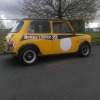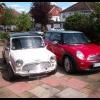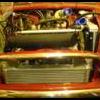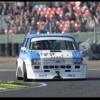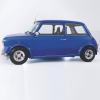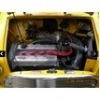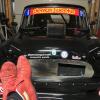
This Is Why I Love These 16 Valve Engines
#16

Posted 09 August 2017 - 08:26 PM
#17

Posted 09 August 2017 - 10:33 PM
Especially when keeping in mind the original A series is 60+ now?( And only 25 OR 30 bhp of i recall right?)
This is also a great book on the first 60 years.......

The A-Series Engine - Its First Sixty Years
#18

Posted 10 August 2017 - 01:03 PM
Im sure that the 190hp is at the fly not the wheels. I know there are lots of people getting that sort of power from the old A series nowadays, But most of whom are with forced induction not N/A like this one.
The transmissions today are pretty robust even with lots of power if there the right kit!
Arrow cranks are not all they have cracked up to be. They have been redesigned in the last few years without the c clip groove in the end due to cracking and I <think> the 88mm versions have now been taken from sale, again due to failures. I also know that the 86mm cranks are prone to cracking a pal of mine has had 3 cranks in several years and now says that he will never use another.
I myself boast big power and swear by the standard cranks although trying to convince the masses is somewhat difficult..
Looking at this car it seems to be a road car so will not take the abuse a racer does, Its the revs that scare me though 9000 is lots for any engine. although not possible with this power keeping the revs low will increase engine and gearbox life.
omega pistons and arrow rods are the way to go. I myself use these and im happy to report its all good.
I remeber this coming up before, and I would really like to know details, 88mm cranks I can see causing issues as they will be billet, but most 86mm are on a forging so should be quite durable,
Kad being Kad, they would be using one of the Viscous dampers, which could have a fair effect on crank life,
#19

Posted 10 August 2017 - 02:17 PM
Im sure that the 190hp is at the fly not the wheels. I know there are lots of people getting that sort of power from the old A series nowadays, But most of whom are with forced induction not N/A like this one.
The transmissions today are pretty robust even with lots of power if there the right kit!
Arrow cranks are not all they have cracked up to be. They have been redesigned in the last few years without the c clip groove in the end due to cracking and I <think> the 88mm versions have now been taken from sale, again due to failures. I also know that the 86mm cranks are prone to cracking a pal of mine has had 3 cranks in several years and now says that he will never use another.
I myself boast big power and swear by the standard cranks although trying to convince the masses is somewhat difficult..
Looking at this car it seems to be a road car so will not take the abuse a racer does, Its the revs that scare me though 9000 is lots for any engine. although not possible with this power keeping the revs low will increase engine and gearbox life.
omega pistons and arrow rods are the way to go. I myself use these and im happy to report its all good.
I remeber this coming up before, and I would really like to know details, 88mm cranks I can see causing issues as they will be billet, but most 86mm are on a forging so should be quite durable,
Kad being Kad, they would be using one of the Viscous dampers, which could have a fair effect on crank life,
The arrow cranks are cnc billet and not forged like the mini spares versions.
#20

Posted 10 August 2017 - 02:18 PM
Id agree totally that a forged crank would be far superior to a cnc billet at any stroke!
#21

Posted 10 August 2017 - 06:54 PM
Ahh the olde billet vs forged crank argument!
There is plenty of information out there to say that both are very good, which is better depends on who you speak to and generally what they are selling (i.e. Minispares). There are a-lot of professional engine builders out there that rate a Billet crank as superior to a Forged crank. Billet Cranks are used in Top Fuel Dragsters, Nascar, F1 etc!
I would say that a top quality harmonic damper is a must on any Engine build which is why I use a Kad Viscous Damper.
http://www.cosworth....ts/crankshafts/
http://www.epi-eng.c...sign_issues.htm
http://www.hotrod.co...rankshaft-tech/
http://www.enginebui...onnecting-rods/
#22

Posted 10 August 2017 - 11:09 PM
How much of a special case is a 3 bearing A Series I wonder?
Must be a balance of rigidity vs durability against fatigue.
#23

Posted 11 August 2017 - 07:09 AM
Exactly.
You cannot compare a F1 engine to a mini crank, or a top fuel dragster.
F1 cars have mega budgets for one, and there strokes are tiny about 50 mm. they also have a bearing after every rod.
And will use the very very best in steel.
A top fuel dragster is only on full throttle for 30 seconds about 3 runs before a full rebuild then the crank is scrap, also these cars only go up the gears they dont come down the box which is where the crank is wanting to flex.
Cnc is used to save costs on one offs and in mass produced items, as its quick and relatively simple, if cost and time wasnt an issue forging would be used every time, but tooling costs are high its dirty dangerous work and you need large spaces for the process.
#24

Posted 11 August 2017 - 07:48 AM
Some interesting discussion there and getting a bit off topic, none the less, I'll throw in some food for thought.
I can't see any A series engine making enough power to break any crank from it's power output and RPMs, be it cast (not that I know of any cast crank from an A Series), Forged or Cut from Billet. Most crank breakage in the A Series are as a result of Harmonics.
The factory Cranks were all forged,some in EN16T and of course a few in EN40B. They may have used other materials but none that I know of.
For what it's worth - Material for Material - a Forged Crank will always be stronger than a Billet Crank. Forged Cranks have a more continuous grain structure than all the cut grains in a Billet, where there is little, if any, continuous grain.
Billet Cranks in some engines and configurations maybe stronger, BUT it's not from the manufacturing process. Not all materials can be forged and some that can be used to cut a Billet from can't be Forged. So it's not really straight forward to compare one to the other.
Forged Cranks in small numbers are prohibitive in terms of cost to manufacture, so that's why Billet are usually commonly more used when what's being sort in terms of configuration can't be done from a (Factory) Forged Crank.
Cranks also have to remain flexible but sturdy and also withstand being flexed and twisted without fatigue failure. To some degree, this is where the right Harmonic Damper comes in to play and they need to be tuned to the particular Crank and Engine that they are fitted to to work correctly.
Someone once said that Cranks can't be cast as they'll brake with the inference being that being cast iron, they are brittle. Well, the Flat Head Ford V8 had a Cast Crank as did all our Australian Manufactured V8 Engines from both Holden and Ford. In the case of the latter, it's not until power level get up around the 800 HP mark that alternative Cranks are fitted. I'm not sure, but I think many Chev V8 Cranks were also Cast Iron and no doubt, there were others too.
The Flat Head Ford V8 stock Crank - which is Cast Iron - is usually accepted to run up to 450 - 500 HP before alternatives are looked for. The other fact with these Engines are - like the A Series - they are a 3 Main Bearing Crank. I'll also point out that more often than not, the stock Bearing Caps are also used, ie, they don't go fitting steel 4 bolt caps nor strap them.
Edited by Moke Spider, 11 August 2017 - 07:49 AM.
#25

Posted 11 August 2017 - 11:58 AM
thats good info,
another cast crank is the fiat 500/126, i belive there are a number of cast fiat cranks,
I must say I dont like the idea of long stroke billet mini cranks, ussentially youve taken the std crank, stroked it right out, and reduced the big end diameter by 1/8". I cant remember off hand exactly but I belive at std stroke there is still some big end/ main overlap, once you get to 84mm stroke and S bearings i belive this is gone,so I think you loose a lot of strenght with a billet although obviously you can combat this with better materials.
somthing I saw a while back whcih supprised me was a renound engine builder saying that fluid dampers didnt work because when he tried one it cost about 3 hp. now I'm no expert, but I was under the uimpression that all crank dampers will cost a bit of power, as if they dont they arent absorbing anything.
#26

Posted 11 August 2017 - 12:13 PM
The reason they had solid mounts Moke Spider was that the KAD head sits very high and they used to drop then engines down slightly to get it under the bonnet.
I remember when Cars and Cars Conversions did the first exclusive feature on the KAD head (early 90's?), it was originally designed to fit into the metro engine bay and space was not so bad, however they picked up on the potential in a mini and probably never looked back. Even then it was expensive, a road head was £2.5K, you then needed another couple of grand for the fuel injection.
#27

Posted 11 August 2017 - 08:52 PM
somthing I saw a while back whcih supprised me was a renound engine builder saying that fluid dampers didnt work because when he tried one it cost about 3 hp. now I'm no expert, but I was under the uimpression that all crank dampers will cost a bit of power, as if they dont they arent absorbing anything.
Not really something I'd even considered, but does have the grey matter thinking about it.
I tend to think longevity over performance though, so the concept of not fitting a damper has never really crossed my mind nor any associated losses, with either a rubber mounted or fluid type. Have some understanding of how they work, I would say, yes at and around Harmonic Resonance, it's likely they all sap power, if a Fluid types saps more, it could show it's more effective at what it does.
But as they say 'to win, you must first finish'.
#28

Posted 11 August 2017 - 10:14 PM
somthing I saw a while back whcih supprised me was a renound engine builder saying that fluid dampers didnt work because when he tried one it cost about 3 hp. now I'm no expert, but I was under the uimpression that all crank dampers will cost a bit of power, as if they dont they arent absorbing anything.
Not really something I'd even considered, but does have the grey matter thinking about it.
I tend to think longevity over performance though, so the concept of not fitting a damper has never really crossed my mind nor any associated losses, with either a rubber mounted or fluid type. Have some understanding of how they work, I would say, yes at and around Harmonic Resonance, it's likely they all sap power, if a Fluid types saps more, it could show it's more effective at what it does.
But as they say 'to win, you must first finish'.
in a simplistic view they will not absorb any power but could reduce engine acceleration. but as the rotation mass is quite close to the cranks it will be minimal but will be greater than a standard sized damper. but if you consider what it was developed for constant high rpm use (circuit) it is ideal in a sprint car may be less than ideal where change in speed is more desirable.
when i change my damper (will need a trigger wheel set up some time) i am not sure i would splash for the KAD damper.
#29

Posted 11 August 2017 - 10:22 PM
I'm still chewing on it all.
One thing that will occur in an A Series engine and many others is that without a damper or insufficient damping, the cam and ignition timing will 'scatter' and be more pronounced at resonant RPMs. This could have a positive or negative effect on HP.
#30

Posted 11 August 2017 - 10:33 PM
I'm still chewing on it all.
One thong that will occur in an A Series engine and many others is that without a damper or insufficient damping, the cam and ignition timing will 'scatter' and be more pronounced at resonant RPMs. This could have a positive or negative effect on HP.
but where is the scatter being introduced? does a crank trigger remove this as you are getting rid of the dizzy and all the points between to the crank?
0 user(s) are reading this topic
0 members, 0 guests, 0 anonymous users



